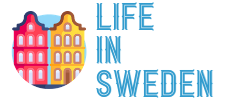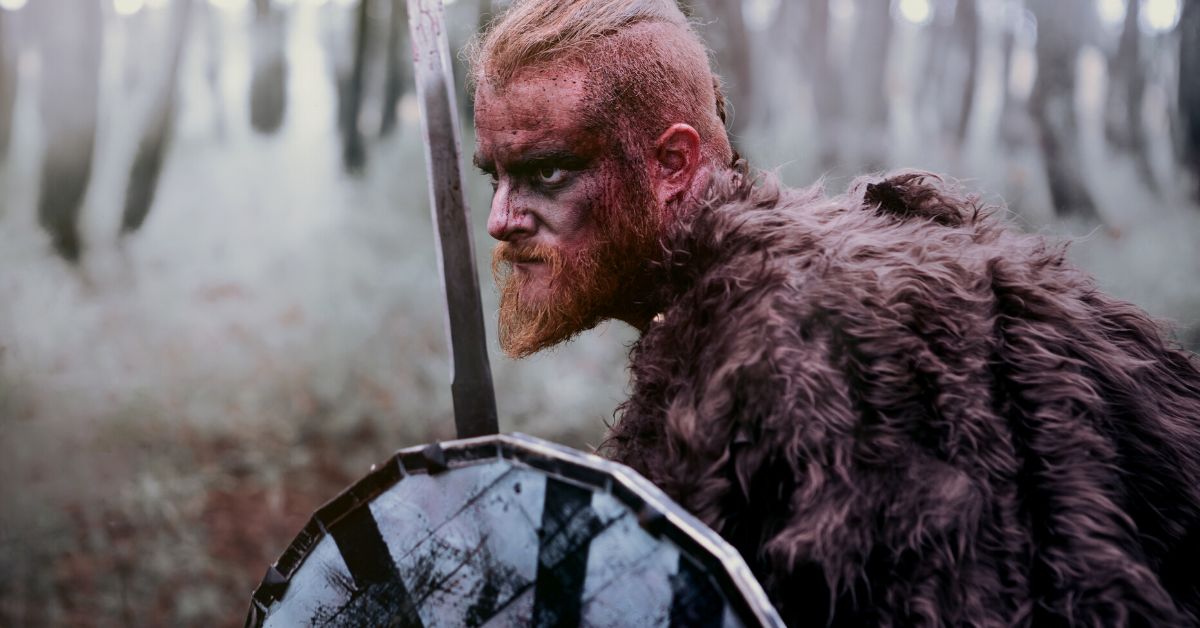Any knowledge of the Viking Age is incomplete without understanding one simple yet important element: Viking face paint. It’s long been known that the Viking Age was a time of great creativity and innovation, but how did this relate to their use of facial decorations? Let’s explore the history of Viking face paint and its importance in everyday life for these fierce Norse warriors. Who knows, you might even get inspired to try Viking makeup yourself!
Did vikings paint their faces?
There is evidence to suggest that some Vikings did paint their faces for various reasons. In Viking culture, Viking face paint was often used as a form of war paint, to intimidate enemies and show support for a particular cause or leader. Face paint was also used for religious or spiritual purposes, as some Vikings believed that it had the power to protect them or bring them good fortune.
There is also evidence that Vikings used face paint for more practical purposes, such as to protect their skin from the harsh Scandinavian weather. Some Vikings may have also used face paint as a way to distinguish themselves or show their status within their community.
Overall, it is likely that the use of face paint among Vikings varied widely, and not all Vikings may have used it.
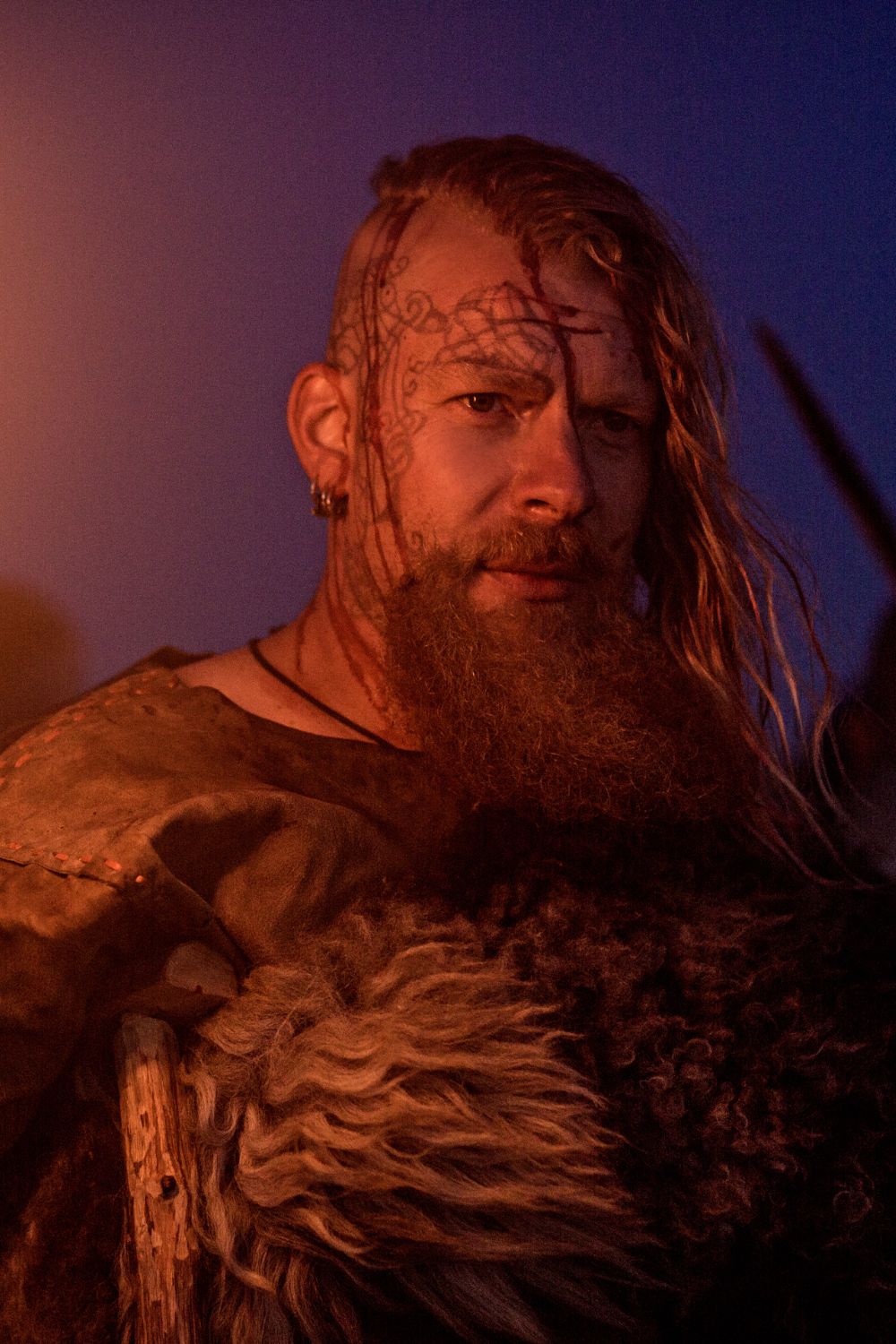
What Did Viking Face Paint Represent?
Viking face paint served multiple purposes within Scandinavian culture. In some cases, it was used as a form of intimidation or disguise on the battlefield—by blackening their faces with ash or soot, warriors could obscure their identities from enemies. This made them appear more menacing while also helping to protect their skin from harsh weather conditions. Additionally, Vikings often believed that by smearing symbols on their faces (such as crosses or horns), they could gain protection in battle from gods such as Thor or Odin.
For many Vikings, however, Viking makeup wasn’t just about intimidation—it also had a spiritual component as well. Some scholars believe that certain symbols were meant to evoke the power of gods and provide strength during times of conflict. Others suggest that facial decorations were a way for Vikings to express themselves artistically and connect with their culture’s rich heritage. It is likely that both theories are true in some capacity—that is, Viking face paint wasn’t just about physical strength, but also mental and spiritual fortitude.
Viking face painting rituals and the history behind them
The Vikings had a unique and fascinating culture, and one aspect that stands out is their use of face paint. This was often done during special occasions such as religious festivals or celebrations of life events, and could also be used to honor deceased family members. For instance, it was common for women to paint their faces with red pigment as part of marriage ceremonies or when welcoming a new family member. Men would often use blue pigment to mark themselves during war campaigns or other brave feats.
However, the use of face paint among the Vikings went beyond just celebrations. The colors and symbols used had specific meanings and were often chosen based on personal beliefs and values. For example, red was seen as a symbol of fertility and new beginnings, while blue represented bravery and power. Some warriors may have chosen symbols to represent their own clan or tribe, while others may have chosen more abstract designs that conveyed deeper spiritual meanings.
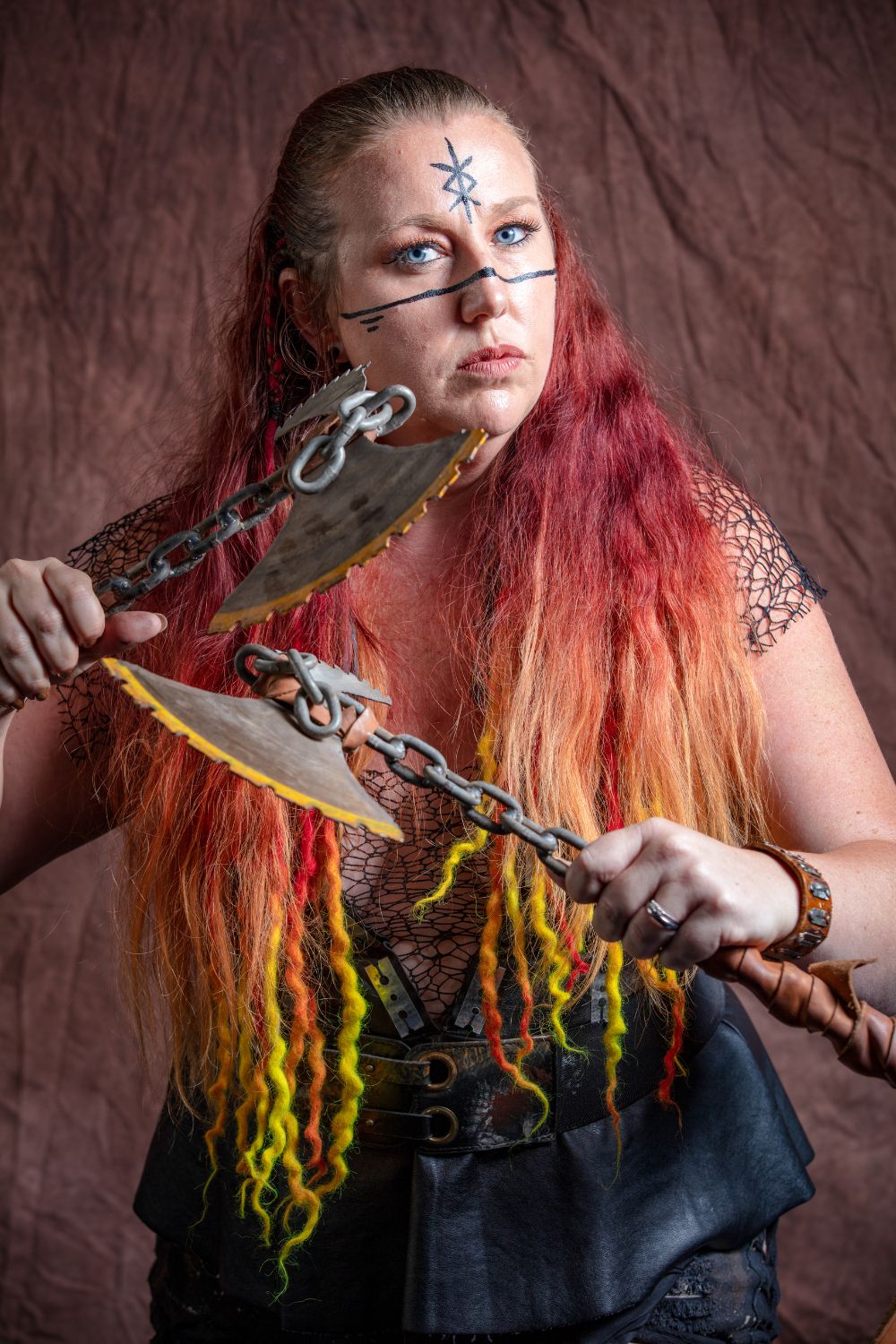
It is also believed that the Vikings used face paint as a way to ward off evil spirits and protect themselves during battle. The ritual of Viking face paint was an important part of their culture, and the symbols and designs chosen were highly personal and unique to each individual. Today, these traditional body art practices serve as a reminder of the rich cultural heritage of the Viking people.
The Vikings were a crucial part of Scandinavian culture and society. They were traders, warriors, explorers, and colonizers who had a significant impact on the world around them. In Scandinavia, Vikings were known as adventurers and conquerors, but they also made significant contributions to their own culture.
The Vikings were excellent seafarers and used their boats to explore new lands near and far from Scandinavia. This allowed them to establish trading relationships with cultures all over Europe, Asia, and parts of North Africa. This commerce facilitated the exchange of goods and ideas between different regions and also led to the spread of Christianity in parts of Europe where it was previously unknown.
In terms of warfare, the Vikings are famous for their raids on other parts of Europe during the Middle Ages. They fought bravely against larger armies in countries like England and France, often using ships to surprise attack and plunder coastal cities and towns. They were also skilled at defending their own homeland from foreign invaders like the Franks and Muslims from Spain and North Africa.
As settlers throughout Europe and beyond, the Vikings left a legacy of innovation. They were skilled craftsmen who built some of the oldest longhouses that still stand today in countries like Norway and Sweden. They also brought their own customs, such as their polytheistic faith, which is still practiced in some rural communities in Norway today.
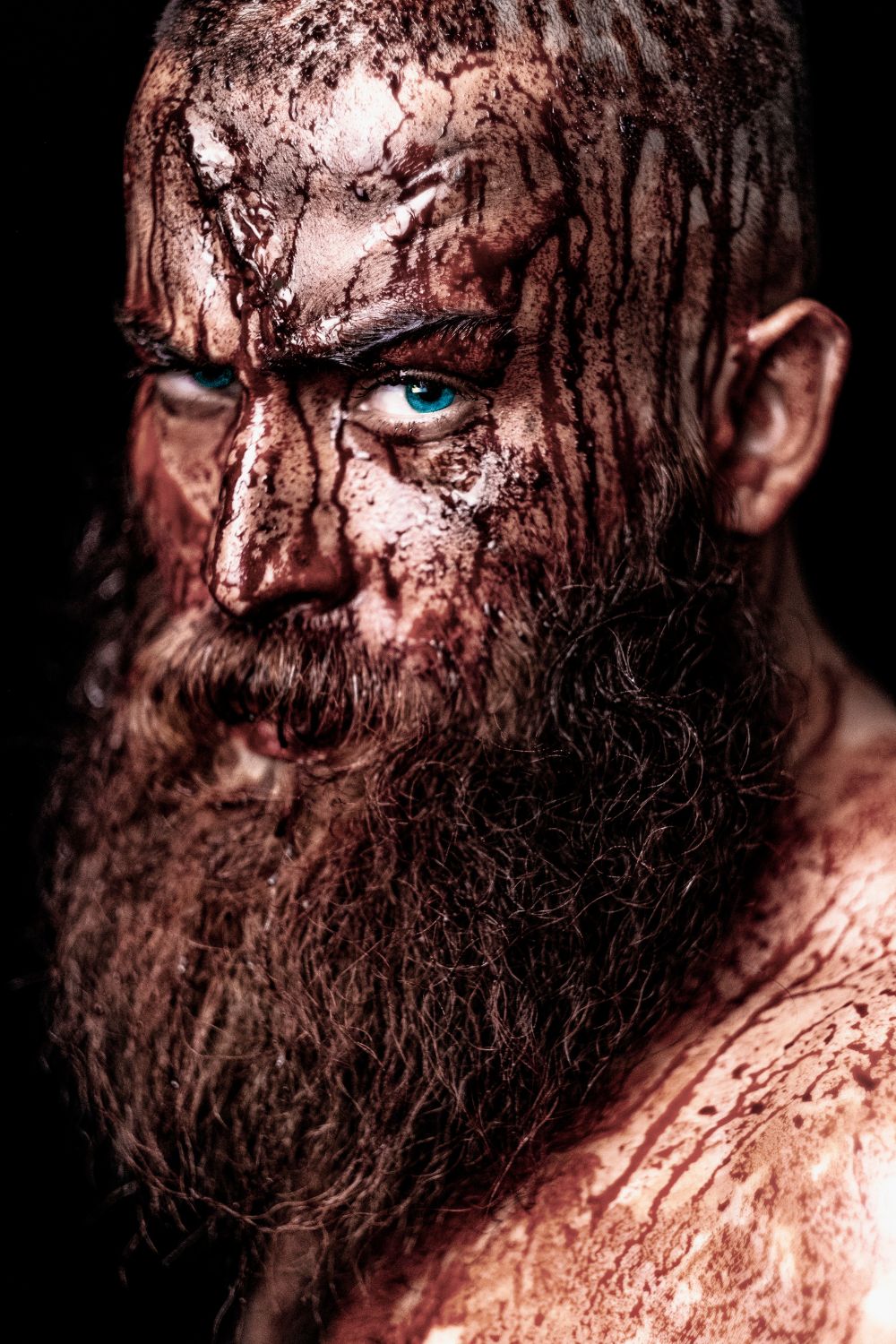
Even though many centuries have passed, Viking culture remains deeply rooted in Scandinavian history. Viking makeup and art depicting these early Northern Europeans can be found everywhere, from coins produced by royal families to popular TV shows inspired by their culture and spirit of adventure. Through exploration abroad and cultural contributions at home, the Vikings left an indelible mark on Scandinavian life for generations past and present.
Techniques and tools used to apply the Viking face paint
The Vikings living in 8th-11th centuries are thought to have used plant-based pigments for their face paints. These pigments could have been mixed with water or oil to create a paste or liquid, and then applied using their fingers, brushes made from animal hair, sponges, or other tools. It is also possible that airbrushing or stenciling techniques were employed – though there is no direct evidence available. Investigate this fascinating part of ancient culture and uncover how they mastered the skillful application of these symbolic paints.
It is believed that the Vikings drew upon plant-based pigments to create their face paints. These were likely mixed with water or oil, and applied using either their fingers, animal hair brushes, sponges, or other tools. Though there is no direct evidence, it is possible that airbrushing or stenciling techniques were also used. Learn about this ancient culture and discover how they employed varied techniques and tools to apply these symbolic paints.
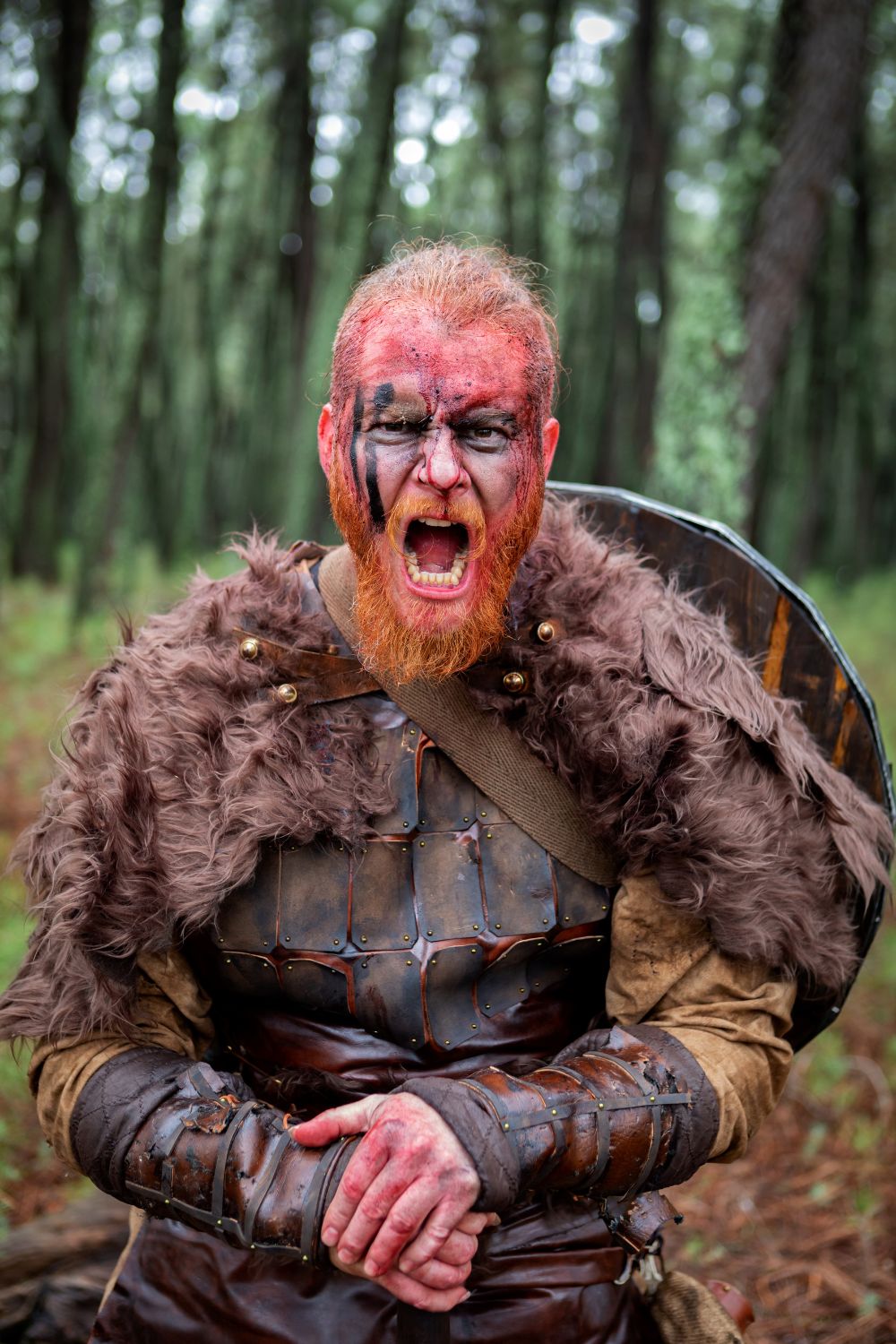
Though there is no direct evidence of it, the Vikings may have used airbrushing or stenciling techniques to apply their face paint. They likely had a great deal of skill using various tools to achieve a desired look and convey a symbolic meaning. Dig deeper into the culture of these ancient warriors and explore all the possibilities for the application of their face paints.
How face painting served as a creative expression for ancient Vikings
Viking face paint served as an important means of creative expression for ancient Vikings, allowing them to showcase their cultural identity and personalize their appearance. It was particularly common among warriors as a way of intimidating their opponents before battle. Tribal face paint was used to identify members of a particular tribe and signify allegiance. Designs were often passed down from ancestor to ancestor and were seen as symbols of pride, strength, and courage in Viking culture.
Viking face paint also played a significant role in religious ceremonies, where it was used to symbolically represent gods or goddesses. Ancient Vikings believed that the gods would take on the physical form of individuals who wore sacred symbols like runes or had symbols painted onto their faces. For example, Odin, the God of War and Wisdom, is portrayed as having a blue facial tattoo on one eye representing his wisdom, while Thor is depicted with red tattoos representing his strength and power. Some ancient Viking tribes practiced shamanism, which involved painting the faces of shamans during rituals in order to bring divine energy into their physical bodies.
Overall, Viking face paint allowed ancient Vikings to express themselves creatively while paying homage to their gods through sacred symbols and patterns. It was also used as a form of identification that identified members of a particular tribe or showcased allegiance to certain gods and goddesses. By using face paint as a form of creative expression, ancient Vikings were able to communicate deeply held beliefs that still resonate today.
From intricate symbols and abstract lines to vibrant colors and creative designs, Viking face paint has served as a powerful form of expression for centuries. It was an art form that allowed Vikings to express their individual identity and values, both in victory and against hardship. Women played an important role in the process, contributing to its beauty and significance in Viking culture. Despite the passing of time, these symbols from ancient mythology continue to live on today through modern interpretations of this profound tradition. In this way, Viking face paint remains a meaningful reflection of Viking culture, illustrating its rich history with each unique creation drawn onto skin.
How women contributed to this art form and its significance in Viking culture
The art of face painting has a long history, and its roots can be traced back to Viking culture. Viking women played a crucial role in the development of this art form, often creating intricate facial designs using natural pigments derived from plants and minerals. These makeup designs served several purposes, such as demonstrating familial or tribal affiliation, symbolizing the status of Vikings within their community, and distinguishing friend from foe during battle. Some women even used face paint to ward off evil spirits.
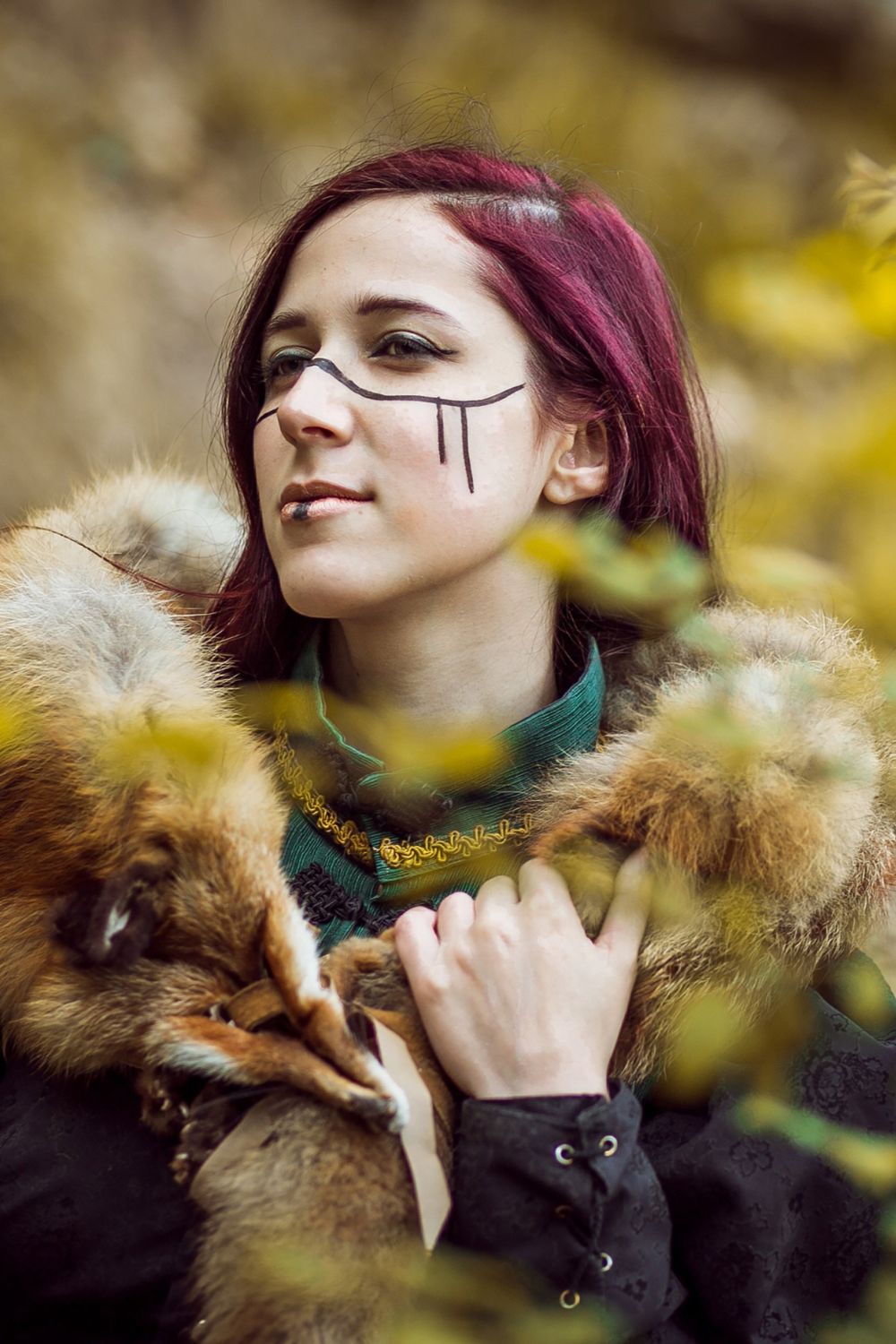
The importance of these facial designs within Viking culture is reflected in the way they adorned their bodies with them. Vikings viewed their faces as a reflection of their inner beauty and often created intricate patterns that highlighted various features such as the eyes, nose, eyebrows, and lips. Women also constructed complex patterns on the forehead and chin to signify protection against bad luck or misfortune. Norse mythology also states that applying makeup would give strength to the warrior in battle, a concept that can still be seen today in sports teams who wear face paint during big games for good luck.
Overall, women have had a significant influence on the development of face painting throughout history, especially within Viking culture where it was used as an expression of identity, protection, and strength. As time has passed, face painting has evolved into more elaborate forms of body art that decorate our faces in unique ways, but it remains connected to its origins by celebrating both beauty and power. Whether used for ceremonial purposes, as a form of identification or for personal expression, face painting has long been a meaningful part of Viking culture and continues to be an important art form to this day.
The traditions and symbols associated with Viking face paint still inspire and influence contemporary Viking makeup practices, and they serve as a reminder of the rich cultural heritage of the Vikings.
Artifacts and physical evidence of face painting from the Viking period
The practice of Viking face paint was an important aspect of Viking culture, as evidenced by both physical artifacts and written accounts. Small wooden containers used to store pigments such as ochre, charcoal, and other minerals have been found in both graves and settlements, indicating their widespread use throughout the Viking world. In addition to these containers, actual pigment has been discovered at archeological sites, along with tools like bone combs and needles that may have been used for more complex face paint designs.
One of the most famous written accounts of Viking face paint comes from the twelfth century Icelandic saga, Egil’s Saga, which mentions that Egil Skallagrimsson painted his face with “red stripes” before going into battle. This suggests that face paint was used both for ritualistic purposes and as a form of psychological warfare, intimidating enemies by appearing larger than life or by showing off battle scars through intricate designs.
There is also evidence that face paint was used beyond the boundaries of Viking society, possibly as far away as North America, where native tribes also made extensive use of facial markings to denote rank or identity within their communities. This suggests that face paint was not only popular among the Vikings but also played a significant role in many other cultures throughout history.
Artwork from the time period depicting Viking warriors with painted faces
Viking face paint was an integral part of the culture and society of the Vikings. These warriors used bright, bold colors and symbols on their faces to show off their strength and courage, and they believed that these decorations would protect them in battle and bring them good luck. The use of face paint also served a practical purpose: the bright colors would help hide the warriors’ identities in battle, and the sense of anonymity gave them more courage to fight without fear of embarrassment if they were defeated.
The paints used by the Vikings were made from a variety of natural materials, including plants, minerals, and even animal parts. The colors were eye-catching and often featured patterns like triangles or spirals that held symbolic meanings for different groups or individuals. These symbols could be used to identify a particular warrior’s family or tribe, but they could also be general signs used across all Viking tribes.
While we may not know exactly what each symbol represented in Viking culture, it is clear that the use of face paint was an important part of Viking life. Some historians even believe that wearing paint on their faces gave the Vikings an advantage in combat, helping to intimidate their opponents and boost their confidence in battle. Regardless of its exact purpose, Viking face paint remains a fascinating aspect of this ancient culture that continues to captivate us today.
Ancient writings about Vikings and their use of face painting
The Vikings were a seafaring people who played a significant role in the early history of Northern Europe. During this time, they developed their own unique culture and traditions, including the practice of face painting. Viking face paint was widely used among the warriors, both for decorative and religious purposes. It was believed that the face decorations gave the warriors an appearance of fearlessness and strength in battle.
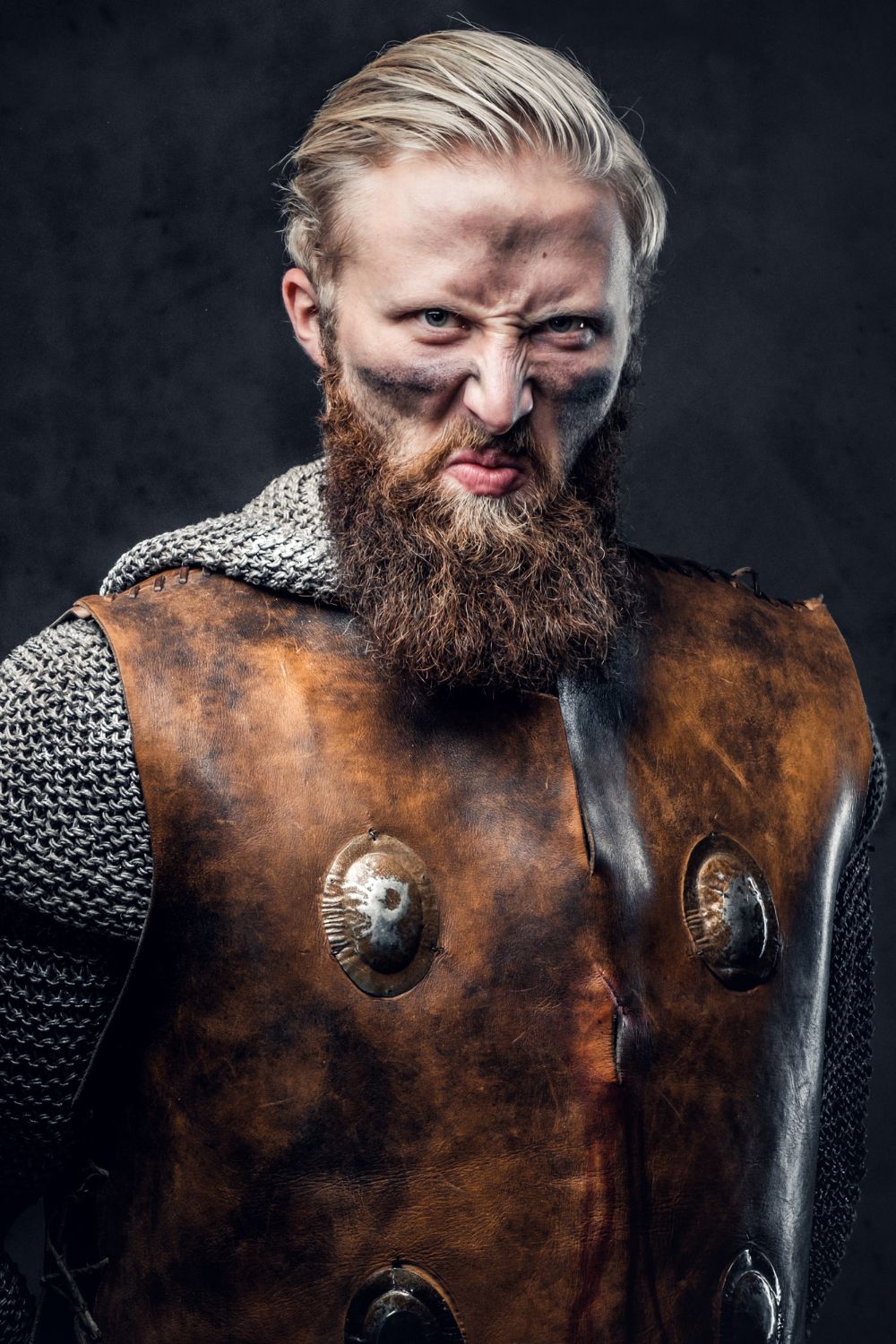
Recent archaeological discoveries, such as gravesites with facial paint on remains, have helped to shed more light on this ancient tradition. This evidence suggests that facial painting was not only used for decoration but also to represent something deeper. For example, some believe that certain symbols on a Viking’s face could denote their rank or status within the tribe. In addition, it is thought that some designs may have been used to ward off evil spirits or to signify loyalty to particular gods, while also serving as a means of intimidation against enemies during raids and battles at sea.
Overall, face painting was an important part of Viking culture and society during this time. It provided them with a sense of identity and pride and created a sense of unity among them as they encountered new cultures on their travels around the world. As we continue to learn more about this fascinating tradition through ancient literature, it becomes increasingly clear just how significant these symbolic designs were within Viking life.
What purpose face painting served for these legendary warriors
Viking face paint had a variety of symbolic meanings for these legendary warriors. Some used it to make themselves look more intimidating on the battlefield, while others painted their faces with specific colors and symbols to identify their tribe. Face painting was also used to signify one’s social rank within the tribe, with certain patterns indicating noble or warrior status.
In addition to its practical and social uses, face painting was also believed to have spiritual significance. Some claimed that it offered protection against evil spirits and brought good fortune in battle. Moreover, the practice of face painting served as a visual expression of Viking culture and was seen as a symbol of strength and courage, with the patterns representing the warrior’s commitment to their people. It is no surprise that this ancient tradition has been so revered by many cultures throughout history and is still celebrated today.
A unique insight into Norse culture
The makeup rituals of the Viking culture provide a unique perspective on Norse culture. Makeup was a significant aspect of Viking life, as demonstrated by literature, art, and archaeological findings. By studying Viking makeup rituals, we can learn more about how the Vikings lived and thought.
Viking makeup had both practical and ceremonial purposes. For example, Iron Age Scandinavians used facial paint to repel evil spirits and protect themselves from harm. They may also have used makeup for personal decoration or to mimic the Norse gods they worshipped. Viking women also used cosmetics such as kohl eyeliner or lip rouge made from berry juice to enhance their appearance for special occasions or ceremonies.
Furthermore, analyzing Viking makeup rituals helps us to understand how their beliefs influenced their daily lives. In the sagas, for instance, Vikings are frequently depicted with eyes outlined with black pigment that resembled those of Odin. This suggests that they sought protection from Odin’s power by using makeup to resemble him. Additionally, some parts of Scandinavian society forbade women from wearing cosmetics, as it was believed to bring misfortune to themselves or their families. This demonstrates that superstition played an important role in Viking culture and was deeply ingrained in their daily practices.
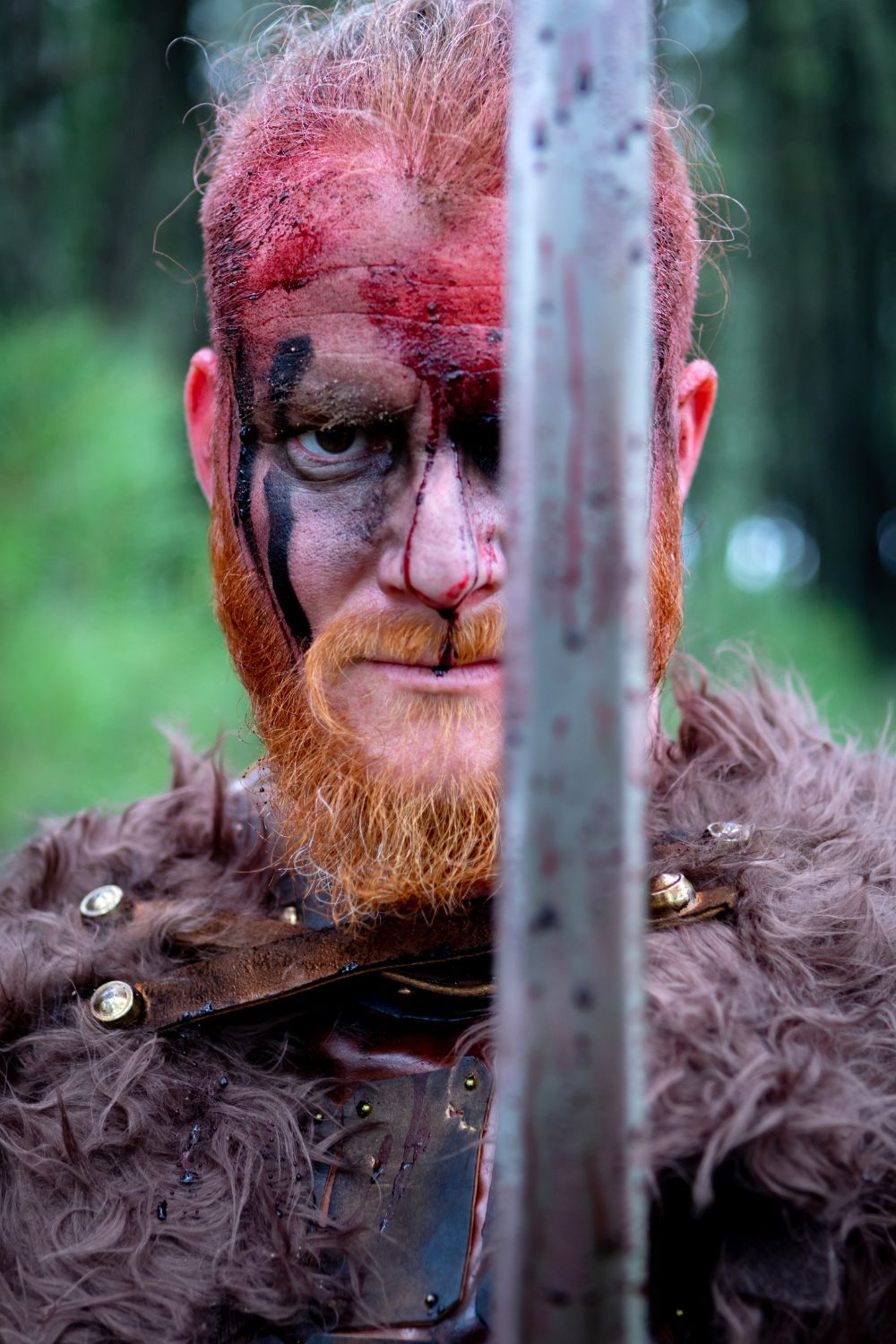
Overall, exploring Viking makeup rituals offers a valuable insight into Norse culture and helps us to understand how the beliefs and customs of this ancient civilization impacted the lives of its people for centuries.
Final Thoughts on Viking face paint
Examining Viking face painting rituals reveals not just something about Norse culture, but also the cyclical nature of human history. It seems that even though trends come and go, certain practices remain, only resurfacing in modified forms. Research into this period provides an interesting insight into the mythology and attire of these warriors, with physical evidence, artwork, and written accounts providing a window into their beliefs.
Understanding the meanings behind the symbols used during this era can help people in the present recognize patterns in their own lives. Our research on Viking face paint rituals demonstrates the potential of using history as a means of bridging cultural and temporal gaps. It is worth considering what other insights we may uncover about our past if we continue to delve into this captivating topic.
